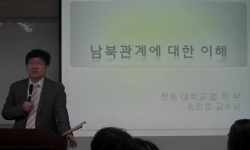Eugene Chung. 2018. Lexico-Syntactic Structures of Spatial Expressions. Language Information, Volume 26. 79-102. This work aims to model a lexico-syntactic structure for various spatial configurations. In English, spatial expressions are similar to tr...
http://chineseinput.net/에서 pinyin(병음)방식으로 중국어를 변환할 수 있습니다.
변환된 중국어를 복사하여 사용하시면 됩니다.
- 中文 을 입력하시려면 zhongwen을 입력하시고 space를누르시면됩니다.
- 北京 을 입력하시려면 beijing을 입력하시고 space를 누르시면 됩니다.
https://www.riss.kr/link?id=A105273448
- 저자
- 발행기관
- 학술지명
- 권호사항
-
발행연도
2018
-
작성언어
English
- 주제어
-
등재정보
KCI등재후보
-
자료형태
학술저널
-
수록면
79-102(24쪽)
- 제공처
-
0
상세조회 -
0
다운로드
부가정보
다국어 초록 (Multilingual Abstract)
Eugene Chung. 2018. Lexico-Syntactic Structures of Spatial Expressions. Language Information, Volume 26. 79-102. This work aims to model a lexico-syntactic structure for various spatial configurations. In English, spatial expressions are similar to transitive verbs in the pattern where prepositions take arguments to describe spatial relationships. The meaning expressed by a spatial preposition indicates how its arguments physically relate to each other in space. The spatial preposition has two arguments, a Figure and a Ground. This study adapts Pustejovsky's (1991, 1995) argument structure and co-composition from the Generative Lexicon Theory in order to represent multiple configurations. Various features are employed to describe spatial relations and spatial entities. Arrangement features and physical relationship features are for spatial relations. Region features, dimensionality, and orientation features are utilized to provide fine-grained specification of spatial entities. The values for arrangements are CONTACT, ADJACENCY, OVERLAP, INCLUSION, SURROUNDING. Region feature takes one of SURFACE, BOUNDARY, TOP, BOTTOM, INTERIOR, EXTERIOR. For the dimensionality, we have 1DIM, 2DIM, 3DIM values. HORIZONTAL and VERTICAL are the values for the orientation feature. A locus structure is introduced to encode various spatial features that are related with words about spatial entities and spatial relations. A spatial preposition and its arguments construct spatial expressions. They compose phrasal level meanings through co-specification with the locus values in the loci structure. The proposed framework can be utilized to represent the formal rules of encoding spatial expressions.
목차 (Table of Contents)
- Abstract
- 1. Introduction
- 2. Lexico-Syntactic Features of Spatial Expressions
- 2.1. Spatial Relations
- 2.2. Spatial Entities
- Abstract
- 1. Introduction
- 2. Lexico-Syntactic Features of Spatial Expressions
- 2.1. Spatial Relations
- 2.2. Spatial Entities
- 3. Modeling Lexico-Syntactic Structures
- 3.1. Integration of Lexico-Syntactic Features
- 3.2. Loci Structure
- 3.3. Unification of Loci Roles
- 4. Conclusion
- References
동일학술지(권/호) 다른 논문
-
국제 클리닉에서의 문화간 의료 커뮤니케이션의 민족지학적 연구 : 환자 심층 설문 면담을 중심으로
- 고려대학교 언어정보연구소
- 김기태
- 2018
- KCI등재후보
-
- 고려대학교 언어정보연구소
- Nicholas Y. Duvernay
- 2018
- KCI등재후보
-
- 고려대학교 언어정보연구소
- Chen Hui
- 2018
- KCI등재후보
-
Native and Nonnative English Speaking Teachers’ Feedback Beliefs and Practices
- 고려대학교 언어정보연구소
- Seohyun Penn
- 2018
- KCI등재후보





 eArticle
eArticle






